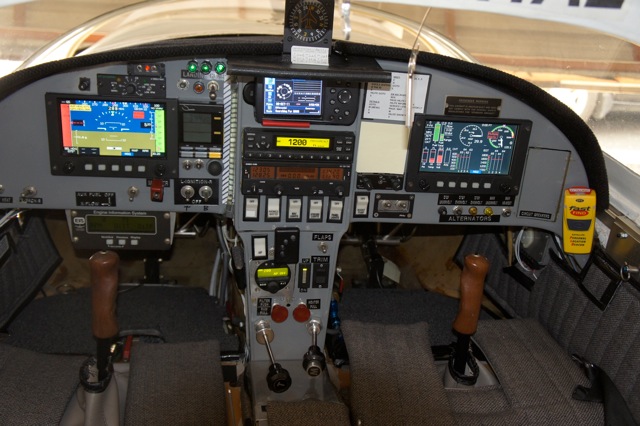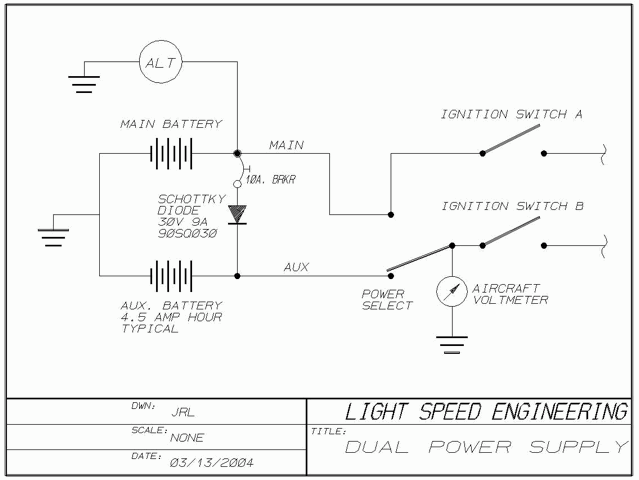| Jeff,
Many thanks. Thanks for the info, and much appreciated. I should always do what Klaus (experience) suggests. ..
Terrence
Sure and while you are at it please read this accident report--http://dms.ntsb.gov/aviation/AccidentReports/olqrjt45jkgiqlzaq5gle03h1/I01172012120000.pdf
NTSB Identification: LAX08LA066
14 CFR Part 91: General Aviation
Accident occurred Tuesday, February 26, 2008 in Murrieta/Temecu, CA
Probable Cause Approval Date: 05/06/2009
Aircraft: Bartle Lancair IV-P, registration: N811HB
Injuries: 3 Serious,1 Uninjured.
The pilot reported that the engine lost power while on approach for landing in the amateur-built experimental airplane. Unable to reach the airport, the pilot initiated a forced landing in hilly desert terrain resulting in structural damage to the airframe. Inspection of the modified engine revealed that it was equipped with an electronic ignition system consisting of two capacitive discharge modules with direct crank sensors. Two five-amp fuses in the electrical circuit for the ignition system were found blown. Inspection of the electrical system found no failures of the physical airplane wiring. The pilot, who built the airplane, stated that he designed the ignition system's electrical circuit with the intention of providing electrical redundancy to the ignition system. Examination and testing of the design as installed demonstrated that a minor voltage differential between the main and redundant power source created a condition that routed the current flow for both ignition sources through a single fuse, resulting in a single point of failure. According to the ignition manufacturer, the recommended wiring configuration that would allow ignition power redundancy did not include the addition of a common bus bar as was found on the accident airplane. The positioning of the automotive fuses on the firewall prevented the pilot from accurately identifying the electrical failure.
The National Transportation Safety Board determines the probable cause(s) of this accident as follows:
A total loss of engine power while on approach due to the electrical overload of a fuse caused by the builder's inadequate design and installation of the electrical ignition system.
-----Original Message-----
From: Terrence O'Neill < troneill@charter.net>
To: lml < lml@lancaironline.net>
Sent: Tue, Jan 17, 2012 1:00 pm
Subject: [LML] Re: Steam Gauge Backup
Hey! I recognize that attached schematic ... from Klaus.
It suggests using the aux battery to power just one ignition, but I think I'd rather have both ignitions and put in a heavier 9AH battery.
How? Would this work? Delete the power select switch, connect the power select terminals instead, add a second Schottky where the word MAIN is, and put a (power select -- now) voltmeter switch between the existing lead and a second lead from the voltmeter to the MAIN side of the added Schottky?
My fuzzy logic suggests that
If both alternators are out, the CB(s) will pop; electrical use reduced, and then both batteries will power on longer. When the voltmeter starts down, switching the voltmeter to read from either side of the second Schottky would tell whether the master battery is failed or not... and to land sooner?
Hmmm. More complicated than just adding a battery, breaker, diode and switch.
Maybe I could just add a battery, the diode and breaker, the second diode, and delete the power select switch Klaus calls for?
Terrence
Terrence,
Yes. You have jogged my creaky memory about the direct connect. And yes. See: http://www.periheliondesign.com/powerschottkydiodes.htm for the type I use because of the low voltage drop. That is, it can be used to isolate the backup battery from the main yet still be charged in flight. See attachment.
Scott
Scott,
Ok.
Since my LSI dual ignition and prop are hot direct from the battery, how about just adding plus and minus separate lines from the 2nd battery to the ignition and electric prop switches?
And, should I have Schottky diodes ... somewhere to keep the stby battery charged normally, yet isolate it in case of main battery shorts?
(Sorry for the simple questions... I'm electrically challenged.)
Terrence
Terrence,
If you have a dual LSI ignition, you should have a backup battery for one of the ignitions.
Scott
Brent,
here's mine. I also have my AOA vane on the wing. Have an Odyssey battery, B&C alternator and a backup small standby alternator; and a Garmin 396 w/ its battery.
Can't think of a senario where I couldn't maintain control if I lost all electrical, except 5 vdc for the LSI ignition.
Considering adding an small backup battery in parallel, or just for ignition.
Comments invited.
Terrence
L235/320 N211AL
On Jan 15, 2012, at 9:39 AM, Brent Regan wrote:
> Ed Gray writes: "I have no steam gage backups. With dual screens, backup batteries and dual ADHRS I feel that I have enough redundancy. Does anyone have input or comment? This plane may be one of the first with no round gauges anywhere."(sic)
>
> Dead man flying.
>
> Regards
> Brent Regan
>
> --
> For archives and unsub http://mail.lancaironline.net:81/lists/lml/List.html

--
For archives and unsub http://mail.lancaironline.net:81/lists/lml/List.html
--
For archives and unsub http://mail.lancaironline.net:81/lists/lml/List.html
 -- --
For archives and unsub http://mail.lancaironline.net:81/lists/lml/List.html

_panel1.jpeg

Dual power supply diagram.GIF
|